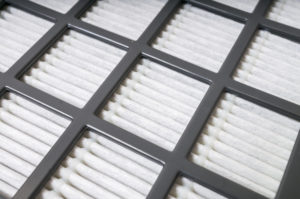 The dust you see collecting on bookshelves and tables is just a fraction of the pollutants in your home’s air. Other particles that may be swimming around in your household air include dust mites, mold, microplastics, and pet dander. HVAC air purifiers help control these potentially hazardous particles. This simple, helpful guide will tell you more about these systems.
The dust you see collecting on bookshelves and tables is just a fraction of the pollutants in your home’s air. Other particles that may be swimming around in your household air include dust mites, mold, microplastics, and pet dander. HVAC air purifiers help control these potentially hazardous particles. This simple, helpful guide will tell you more about these systems.
How an HVAC Purifier Works
The device is installed in your ductwork to remove particles from the air flowing through your HVAC system. It catches not only the dust in the air but also the minute particles that basic air filters don’t capture.
Types
Here are the different types of purifiers:
- HEPA air purifiers — These common HVAC air purifiers use High Energy Particulate Air (HEPA) filters to trap airborne particles that are 0.3 microns or larger.
- Activated carbon filters — These filters have a large surface area and small absorbent pores that capture contaminants and odor-causing particles.
- Ultraviolet light purifier — It utilizes UV rays to destroy bacteria and other microorganisms without filtration.
- Electrostatic air purifier — An electrostatic air purifier uses static electricity to capture particles as small as 0.1 microns in size, such as viruses.
- Ionizing air purifier — It uses negatively-charged particles to attract the positively-charged pollutants. The particles become heavy as they group and drop from the air.
Which HVAC Air Purifier Should You Choose?
Your ideal HVAC air purifier depends on several factors, such as personal preferences, where you live, and your home’s occupants.
Generally, HEPA purifiers are recommended for houses in dry, dusty climates. Carbon activated filters are helpful in homes with odor problems. UV light purifiers and electronic air purifiers (which include electrostatic and ionizing purifiers) may be ideal for households with very young and elderly occupants who are susceptible to disease due to the purifiers’ effectiveness at killing bacteria and viruses.
Units with a combination of air purifying technologies are ideal for homes with family members that have breathing issues like asthma, chronic obstructive pulmonary disease (COPD), and allergies.
Ozone can harm your health, so it’s best to avoid the HVAC air purifiers that produce them. Once you purchase a purifier, don’t forget to perform regular maintenance to keep it operating effectively. To find out the best HVAC air purifier for your home in the Yuma area, contact Hansberger Refrigeration and Electric Company.

